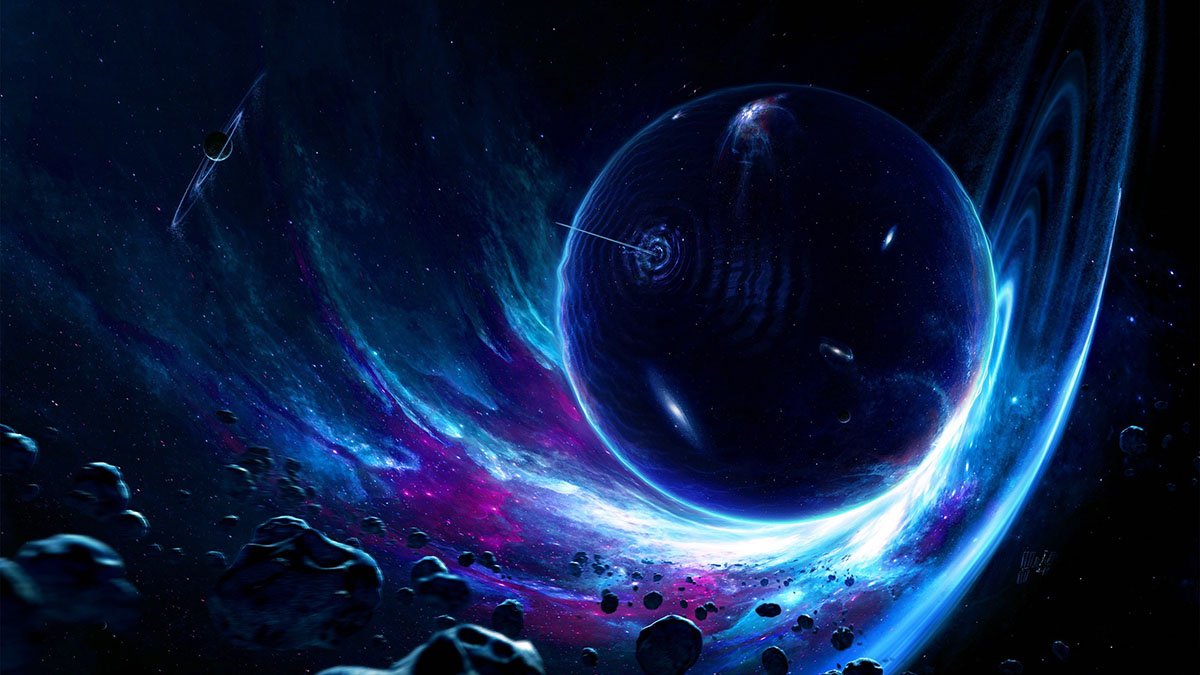searching for wormholes with general relativity

When you’re reading sci-fi stories in which some of the characters find themselves in need to cover hundreds or thousands of light years very quickly without a warp drive, they manage to make it through time and space via a convenient wormhole. It’s not the worst way to go since wormholes are supposed to exist, we just don’t know how big they are. But how exactly do you go about spotting one, especially one a relatively small throat, big enough for a spacecraft to pass through but not exactly on a scale of a star or a planet? Well, according to one recent paper, you look for gravitational microlensing, a smaller version of the distortion of starlight which galaxies and massive black holes tend to create all the time by stretching and warping the space-time plane around them. Because the throat of a wormhole will also have extremely powerful gravitational tides, it would have the same effect on light. So all we really need to do to find real, actual, cosmic wormholes, is to look.
Depending on how far away those wormholes are, we could find one with an opening as small as a hundred kilometers across, or as big as a hundred quintillion kilometers wide. Sounds pretty neat, right? But does this mean that we could try and detect wormholes around us and build a network of interstellar routes based on a four dimensional map of these shortcuts through space and time? Well, not exactly. See, the problem is that a macro wormhole, one bigger than subatomic particles, has never been detected, and even we do see a slight bending of the light around a star, it might not necessarily be a wormhole. If there really are wormholes out in the cosmic wild, the physics of their formation seem to indicate that they’d be very turbulent and short-lived. As one throat reaches through the fabric of space, it has to be held open with a vast amount of energy, enough to overcome degeneracy pressure and create the kind of energy density that would puncture space itself, which is something that a black hole does at birth. And if the inflow at one end would have to be so extreme, imagine how much more complex the interactions become when we account for its tail end.
Conditions extreme enough to create a wormhole so resemble black hole physics that one hypothesis about how macro wormholes are formed involves the singularities of two black holes merging somewhere in deep space. But that idea throws up a few red flags about the notion of traveling through wormholes if they do exist and happen to form this way. The surges of energy would be so violent, anything that tries to travel through is more than likely to become a multi-trillion degree hot quark-gluon plasma slurped down into an event horizon by the immense gravitational tides of the objects than to travel to another galaxy. But even in the highly unlikely chance that there’s some small island of stability in the raging torrents of self-gravitating energy, kind of like a calm eye of a hurricane, an entering spacecraft won’t necessarily know where it’s going or when in time it may end up when it exits. Even worse, the converging black holes would be extremely unstable and the connection between them would be severed rather quickly. Anything caught up in the collapse will meet an end so violent, I really don’t know the adequate words to describe it. It wouldn’t just be vaporized, it may well be totally erased out of the visible universe after being hit with by a tsunami of energy powerful enough to move stars.
Just to pile on to the problems, there’s also the issue of the distance involved with such a wormhole. Since a black hole is actually a self gravitating spheroid rather than an actual tunnel into space and time, for two such objects to interact would mean that they’re very close to each other and the wormhole doesn’t really cover very much distance at all. So if after all those risk and death-defying leaps of faith you do manage to survive a trip through such a wormhole, you wouldn’t have traveled anywhere, probably far less than a million miles at best. So what about more stable, less dangerous, longer lasting, and deeper wormholes? Well, we don’t know the mechanism that would allow them to exist. However, if we do observe persistent microlensing that we could confirm isn’t being caused by a black hole or a dwarf galaxy in the way, the kind of microlensing that could be explained only by the throat of a wormhole, we’ll know that they exist. We just may not be able to travel through them because they’re much more likely to be far away from us than anywhere close.
See: Abe, F. (2010). Gravitational microlensing by the Ellis wormhole The Astrophysical Journal, 725 (1), 787- 793 DOI: 10.1088/0004–637X/725/1/787





